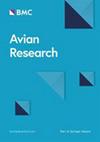在Natura 2000站点非选择性捕猎水鸟导致受保护物种的死亡:来自波兰西部的案例研究
IF 1.7
2区 生物学
Q1 ORNITHOLOGY
引用次数: 0
摘要
在诸如重要鸟类区()等生物多样性丰富的地区,对水鸟的非选择性狩猎构成了重大挑战,这些地区是受保护和狩猎物种聚集的地方。在这里,我们根据对狩猎袋照片、当地狩猎记录和标准化鸟类监测数据的分析,在波兰西部的Natura 2000站点提供了从2021年秋季到2024年春季连续三个狩猎季节的证据。我们记录了来自14个物种的1331只被猎杀的个体,其中43%受到国家或欧盟法律的保护。其中包括列入世界自然保护联盟红色名录的易危潜鸭(Aythya ferina)。几乎所有物种的采伐率都超过了国际鸟盟定义的可持续阈值。在环境丰富度和狩猎袋中物种的代表性之间的统计比较表明,在射击中没有选择性,表明不分青红皂白的狩猎行为。同步水鸟监测(2018-2024)显示,当地水鸟群落急剧下降,普通鹤(Grus Grus)数量明显减少,平均秋季栖息数量从狩猎前的2000多只下降到狩猎季节的320只。虽然因果关系不能直接证实,但这些模式表明了实质性的干扰效应。我们的研究结果表明,在物种丰富的湿地保护区进行选择性狩猎是不切实际的,并强调了有系统地杀害受保护物种。我们建议禁止在巴基斯坦狩猎水鸟,并对猎人实施强制性的鸟类识别培训和认证,以减少对脆弱物种的意外影响。本文章由计算机程序翻译,如有差异,请以英文原文为准。
Non-selective waterbird hunting in a Natura 2000 site results in killing of protected species: A case study from western Poland
Non-selective hunting of waterbirds poses a significant challenge in biodiversity-rich areas such as Important Bird Areas (IBAs), where protected and game species congregate. Here, we present evidence from three consecutive hunting seasons spanning autumn 2021 to spring 2024 at a Natura 2000 site in western Poland, based on analyses of hunting bag photographs, local hunting records, and standardized bird monitoring data. We recorded 1331 hunted individuals from 14 species, 43% of which are protected under national or EU legislation. Among these was the Vulnerable Common Pochard (Aythya ferina), listed on the IUCN Red List. For nearly all species, harvest rates exceeded the sustainable thresholds defined by BirdLife International. Statistical comparisons between species' environmental abundance and their representation in hunting bags indicated no selectivity in shooting, pointing to indiscriminate hunting practices. Simultaneous waterbird monitoring (2018–2024) revealed steep declines in the local waterbird community and a marked decrease in Common Crane (Grus grus) numbers, with average autumn roost counts dropping from over 2000 individuals prior to hunting to 320 during hunting seasons. Although causality cannot be directly confirmed, these patterns suggest substantial disturbance effects. Our findings demonstrate the impracticality of selective hunting in species-rich wetland refuges and highlight the systematic killing of protected species. We recommend banning waterbird hunting in IBAs and implementing mandatory bird identification training and certification for hunters to reduce unintended impacts on vulnerable species.
求助全文
通过发布文献求助,成功后即可免费获取论文全文。
去求助
来源期刊

Avian Research
ORNITHOLOGY-
CiteScore
2.90
自引率
16.70%
发文量
456
审稿时长
46 days
期刊介绍:
Avian Research is an open access, peer-reviewed journal publishing high quality research and review articles on all aspects of ornithology from all over the world. It aims to report the latest and most significant progress in ornithology and to encourage exchange of ideas among international ornithologists. As an open access journal, Avian Research provides a unique opportunity to publish high quality contents that will be internationally accessible to any reader at no cost.
 求助内容:
求助内容: 应助结果提醒方式:
应助结果提醒方式:


